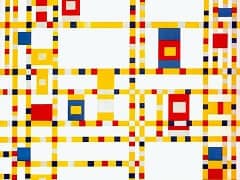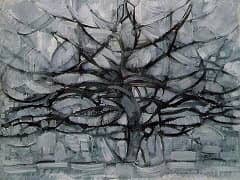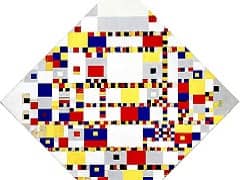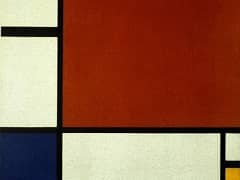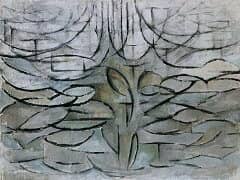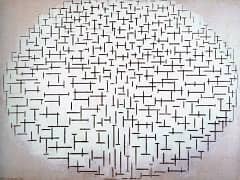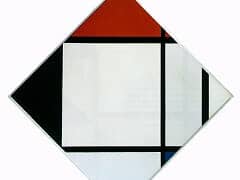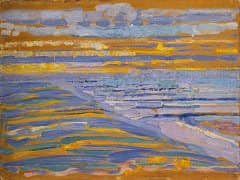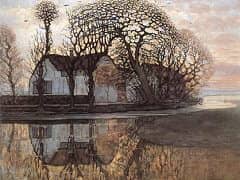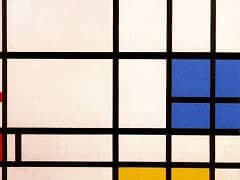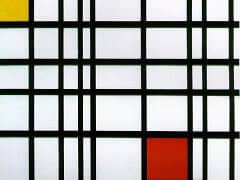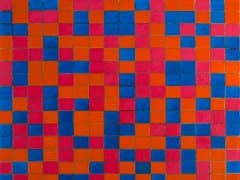Lighthouse in Westkapelle, 1910 by Piet Mondrian
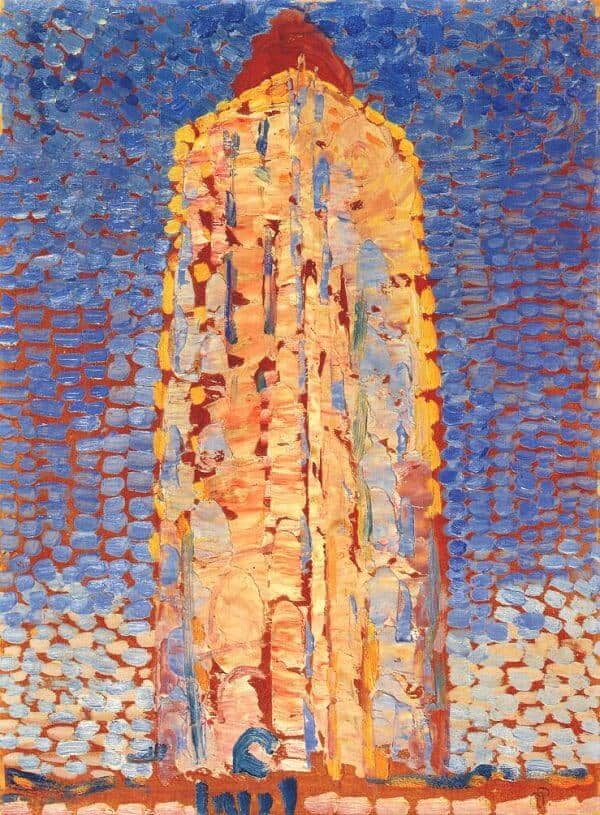
In the evolution of Mondrian's art, this small work, painted on cardboard in a loose pointillist technique, clearly belongs with the preceding works of 1908, such as Windmill in Sunlight.
In this little sketch, the accent is on entirely different aspects of the pictorial possibilities. Color has by now taken its place of importance in Mondrian's work, and he is no longer concerned with the clearcut contrast
of a thing with its surroundings; on the contrary, the divisionist technique enables him to fuse things with their surroundings into a large and convincing unity. And this is what one sees happening in this little picture.
The soaring mass of the tower merges with the upward movement of the color of the sky, producing a consonant, vibrating totality of great purity and power.
This year of 1909, in which Mondrian gave such evident proof that he was in the center of the movement for the renewal of painting in Europe, began with a joint exhibition in the Amsterdam Stedelijk Museum of the most
recent work of Cornells Spoor, Jan Sluijters, and Mondrian. At that time Jan Sluijters was the leader of the Dutch avant-garde.
Like another Dutch artist Van Gogh, Piet Mondrian is among the foremost leaders of the Dutch avant-garde during his life time. His use of color, his stippling technique, the way in
which he could evoke the unity of nature by means of his vivid color, secured him his place. But for Mondrian, as for many a French painter of the same generation, fauvism proved to be a way station on the road to a new
style for the future.

